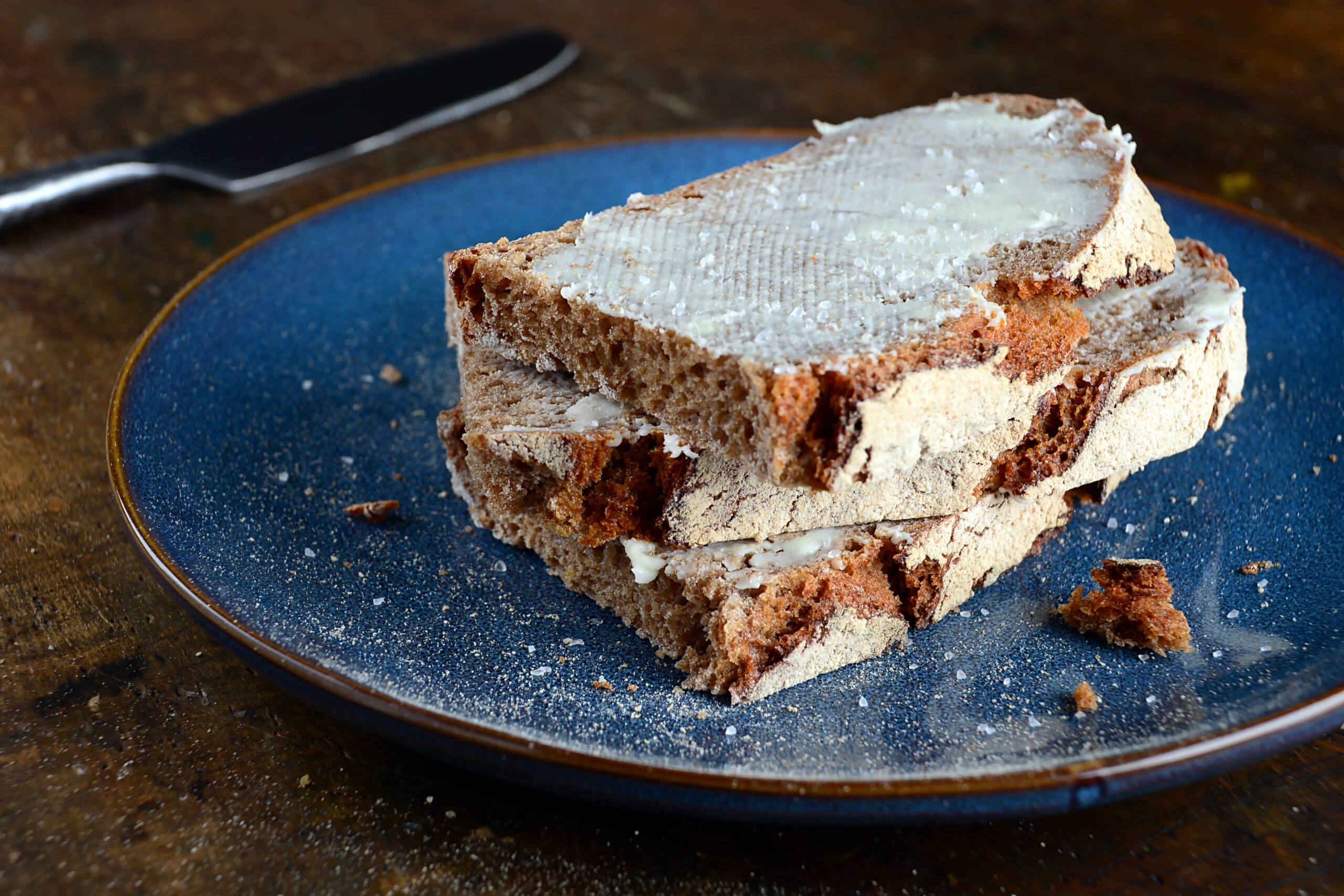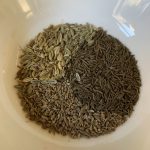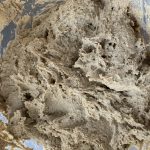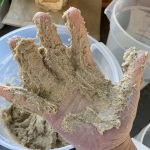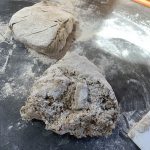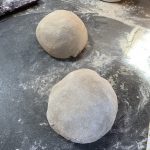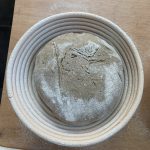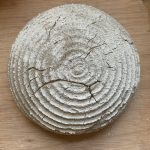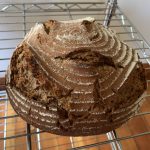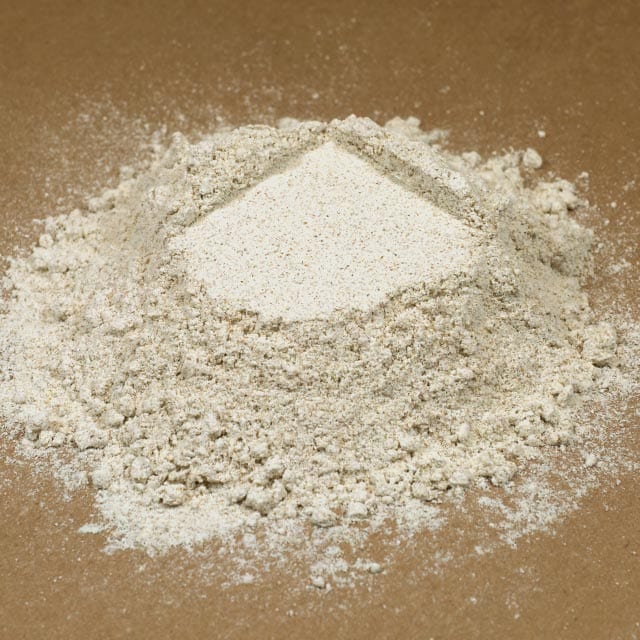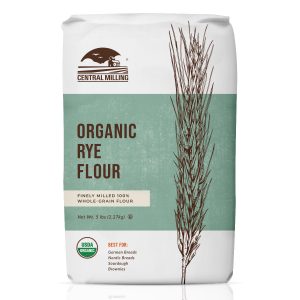Roughly translated as “pie of rye,” this naturally leavened French loaf is very different from the fluffy white French breads we are used to seeing. Originating around the Alps in parts of France, Switzerland, and Germany; this loaf has a unique-looking hard crust and a moist, lightly spiced, dense crumb – both of which are key to its long shelf life.
This recipe features our Organic Whole Rye Flour. If you are using a rye sourdough starter, the bread will end up becoming a traditional 100% rye loaf. If your starter is made with some other flour, that’s OK, too. Don’t let that discourage you from making this delicious bread…
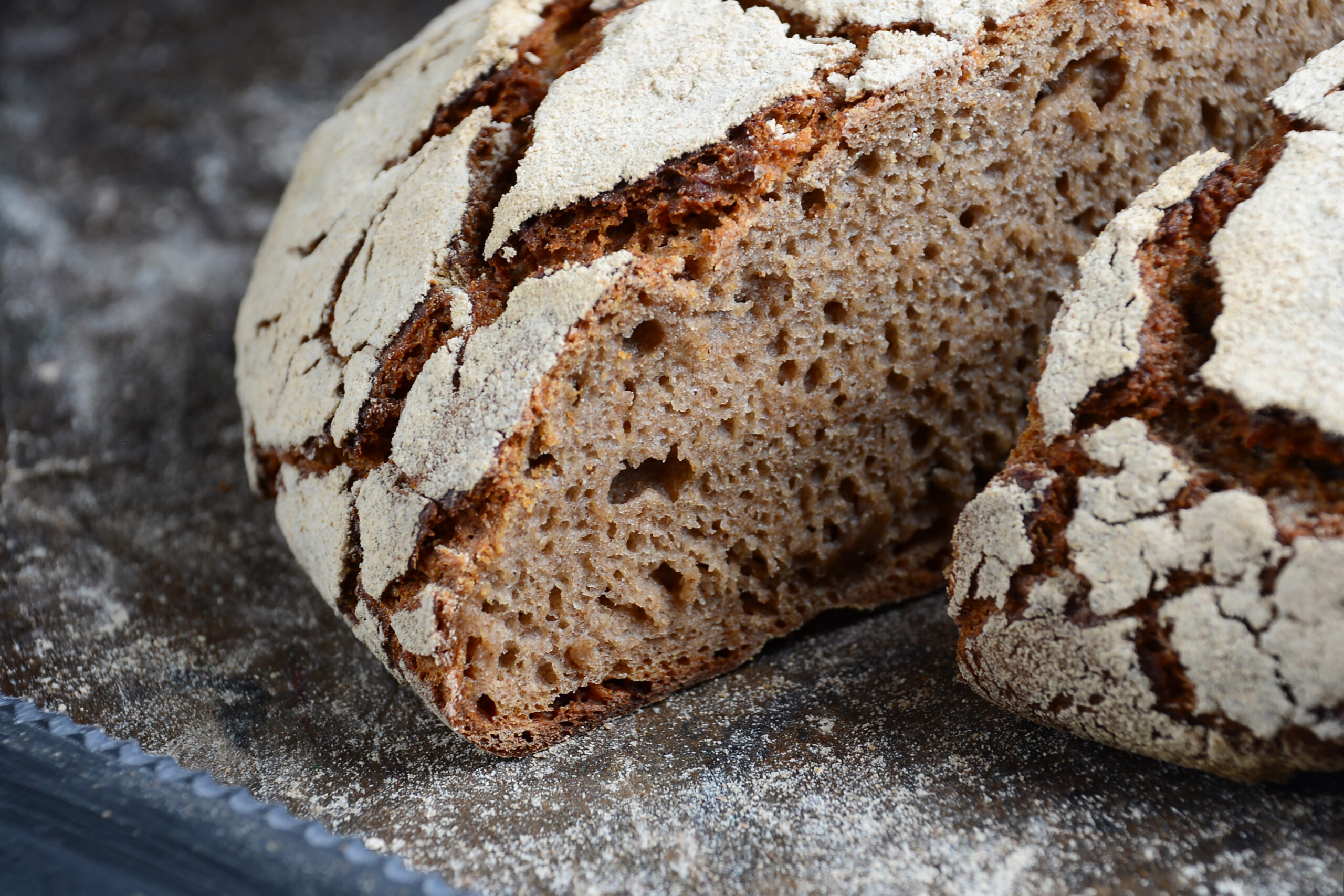
Formula
Number of Units: 2 loaves / Unit Weight: 900 grams / Total Weight: 1800 grams
| PREFERMENT | Fermentation: 12-15 hrs at 70-75˚F | |
|---|---|---|
| Baker’s % | Weight | |
| Organic “Dark” Rye Flour | 100 | 271 g |
| Water | 100 | 271 g |
| Stiff Starter | 100 | 271 g |
| Total | 300 | 813 g |
| FINAL DOUGH | Baker’s % | Weight |
|---|---|---|
| Rye Flour | 100 | 542 g |
| Water | 77 | 417 g |
| Salt (based on total flour weight) | 3.75 | 20 g |
| Spice Mixture (see below) | 1.5 | 8 g |
| Preferment | 150 | 813 g |
| Total | 332.25 | 1800 g |
| Spice Mixture | Baker’s % | Weight |
| Fennel | 25 | 2 g |
| Anise | 25 | 2 g |
| Caraway | 50 | 4 g |
| Total | 100 | 8 g |
| TECHNICAL | |||
|---|---|---|---|
| Dough Temperature | 80-85˚F | ||
| Mixing Time* | Mixer: | Hand or Stand | |
| First: | N/A | ||
| Second: | N/A | ||
| Gluten Structure | Incorporated / short | ||
| First Fermentation | 1 hr 30 min | ||
| Dividing | ~910 g | ||
| Pre-shaping | None | ||
| Resting Time | None | ||
| Shaping | Scoop directly into a well floured basket or lightly round before placing in basket. | ||
| Proofing | Room Temp | 30-40 min | |
| Baking** | 450˚F | About 60 min | |
| Steam | Yes | ||
*Mixing time can vary depending on mixer.
**Baking time and temp can vary depending on oven.
Process
The Evening Before
Mix all the pre-ferment ingredients in a container that can hold at least 2 liters. You can do this by hand or with a spoon or fork. Make sure there is no visible dry flour. Cover the container with plastic wrap and set it in a warm place for 12-15 hrs.
The Day Of
If your spices are whole, place them in a grinder to be ground.
In a large bowl, combine rye flour, salt, and spices together until they are thoroughly blended.
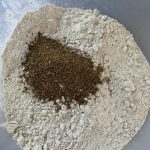
Next, add all of the pre-ferment and 90% of the water to the flour mixture and mix until combined. You can use a stand mixer on low speed or mix by hand. If you still see some dry flour, use the remaining water to help pick up and hydrate that flour while you finish mixing. If there is no visible flour, add the remaining water and mix until it is combined.
Cover the bowl with plastic and let it ferment in a warm place for 1.5 hours. The dough will not double in size, but you should notice that it has slightly expanded.
Afterwards, prepare a round bread form or proofing basket (aka banneton) by either heavily dusting the inside with rye flour or placing a linen cloth inside the form and heavily dusting the cloth.
Take the dough out and place it onto a counter that has been dusted with rye. This dough can still be very sticky. The trick is to make sure there is enough rye flour to keep the dough from being sticky, but not too much where the flour would not be absorbed.
Divide the dough into two equal portions and shape each into a round ball/boule. There are many different methods on how to accomplish this with a sticky dough, but try to keep the top of the ball smooth and keep the seams on the bottom.
Now we can transfer the ball/boule into the prepared bread form. This bread is pretty forgiving, so you can place this seam-side-up or seam-side-down – both ways produce beautiful, unique patterns on the surface of the final loaf. Cover the dough with a towel and let it proof for 30-40 min.
While the dough is proofing, preheat your oven to 475˚F.
This bread can be baked directly on a baking steel or stone, or inside a dutch oven. If baking in a dutch oven, preheat your oven with the dutch oven inside and omit the steam when loading in the bread.
If you are baking on a steel/stone, make sure it has been given enough time to pre-heat. Turn the dough gently onto a lightly dusted peel or onto parchment and slide it onto the steel/stone. If you have the ability to add steam into your oven, this would be the time to do so. Close the oven door and lower the oven temperature to 450. Bake for 50-60 min, turning the bread midway or, if using a dutch oven, remove the lid 25 min into baking.
When the bread is done, it should have a hard crust where the random surface pattern’s edges are dark. The bottom of the bread should not be burnt, but when knocking on it, should sound like a low thud.
Take the bread out of the oven and place it onto a cooling rack. Try to resist cutting into the bread while it is warm. Because this bread is made from rye, you’ll want the loaf to cool completely to prevent your knife from becoming gummy when slicing.
